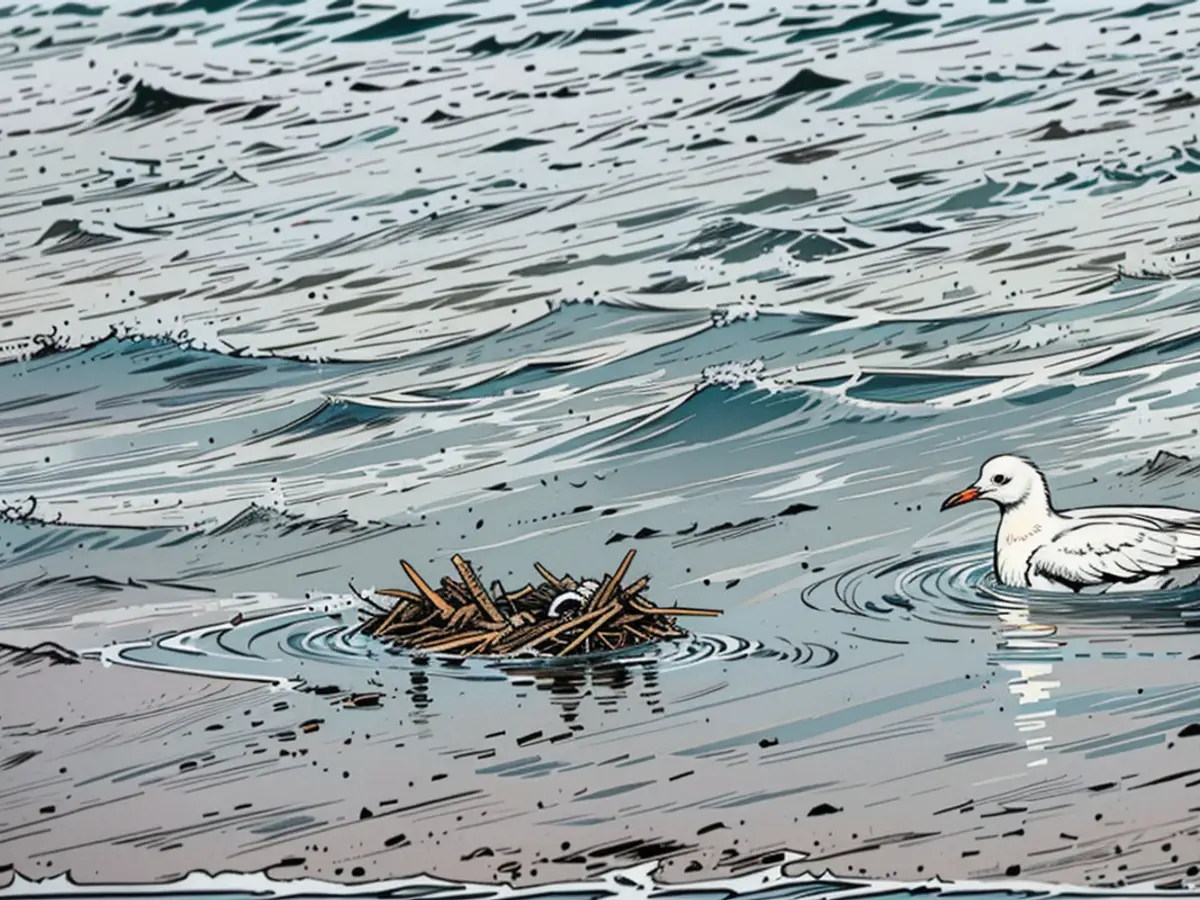The natural world The environment - Summer storm surge caused washout of seabird chicks.
Coastal bird nests suffer devastation due to high water levels on Sunday, reveals the association Jordsand. In places like islands and wetlands, human-level water surges of up to a meter above the average high water didn't create much of a fuss, but for the young birds, it was a different story altogether. Jordsand publicly announced the situation on Tuesday. Eggs that were yet to hatch and recently hatched chicks either drowned, got washed away, or suffered from chilling temperatures.
Veit Hennig, the chairman of Jordsand, expressed that "the timing couldn't have been worse". As most coastal bird species had either fledged chicks or were about to do so, the difficult question of success of a new brood in such short notice remained.
The Hallig Südfall experienced flooding that reached the dyke. Flooding also engulfed the Hallig Süderoog, Nordstrandischmoor, and Norderoog to a far-reaching extent. The mainland's significant coastal bird colonies also saw their fair share of flooding. In Dithmarschen, breeding colonies of coastal birds like sanderlings and black-headed gulls were submerged underwater for nearly two hours due to the Elbe estuary. In the Hamburg Wadden Sea, the Vorlander of Neuwerk island was primarily affected.
The Norderoog island's solitary Schleswig-Holstein gannets' breeding colony, common terns, and oystercatchers faced distress due to a water level 65 centimeters above average high water. Nele Waltering, the bird warden of Jordsand on Norderoog, conveyed her sorrow by stating that "witnessing these birds lose their eggs and chicks so suddenly is extremely distressing." Waltering had been closely observing the mating and breeding process of these birds in the past few weeks, but now had to remain a helpless bystander as nature's fury, the flood, took its toll.
The newly hatched chicks of the coastal birds thankfully remained unharmed since their colony was closer to the stilt houses on Norderoog, enjoying a more elevated position that escaped the reach of floodwaters. The gannets, common terns, and oystercatchers, along with the main colony of gannets, could both be seen live on the internet at www.klimahallig.de, with three webcams documenting their lives. The project "Klimahallig Norderoog" by Jordsand, supported by the Schleswig-Holstein state, aims to show how climate change affects the vulnerable ecosystem of the Wadden Sea and educate the public on it.
Read also:
- Despite the floods in the Wadden Sea during a Sunday storm, the live webcam feeds from the Norderoog island, home to gannets, common terns, and oystercatchers, continued to provide insight into the impact of climate change on coastal bird colonies, as part of the "Klimahallig Norderoog" project supported by Schleswig-Holstein state.
- The high water level in the Wadden Sea during the summer storm surge not only caused distress to the Schleswig-Holstein gannets' breeding colony on the Norderoog island but also affected other coastal bird species like common terns and oystercatchers, whose eggs and chicks were washed away or drowned due to the flooding.
- Nature conservation organizations like Jordsand have expressed concern over the impact of climate change on the fragile ecosystem of the Wadden Sea, with the water level reaching up to 65 centimeters above average high water during the summer storm surge, causing devastation to bird nests and young chicks in Schleswig-Holstein and neighboring regions.
- In response to the floods in the Wadden Sea that affected fish populations and coastal bird colonies, efforts towards water level management and nature conservation have intensified, with organizations and local governments working to reduce the impact of extreme weather events and promote sustainability in the region.








